Table of Contents
Introduction
In today’s digital age, data has become a cornerstone of business operations, decision-making, and growth strategies. However, the sheer volume and complexity of data can overwhelm traditional manual processes, leading to inefficiencies and missed opportunities.
This is where data automation steps in, revolutionizing how organizations harness and leverage their data assets. This comprehensive guide explores the transformative power of data automation in streamlining operations, enhancing decision-making, and driving sustainable growth.
From understanding the fundamentals of data automation to navigating its practical applications and challenges, this journey delves into the intricate intersection of technology and business strategy.
Let’s embark on this exploration, uncovering how data automation empowers organizations to thrive in an increasingly data-driven world.
Understanding Data Automation
Organizations require tools and strategies to help them transform data and derive business insights as the amount of data, data sources, and data types continue to increase. Before organizations can achieve this, they must take the critical step of processing raw and messy data into clean and quality data.
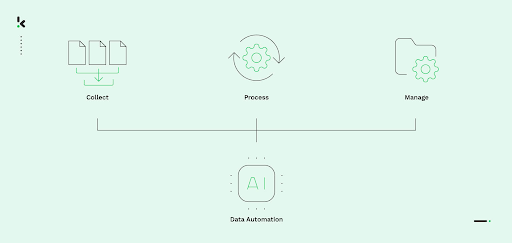
Data automation has become a popular data management technique as it allows organizations to collect, upload, transform, store, process, and analyze data utilizing technologies without manual human intervention.
By automating repetitive and time-consuming tasks such as data ingestion, transformation, validation, cleansing, integration, and analysis, data automation helps organizations make the most of their data and enables faster and easier data-driven decisions.
What are the types of Data Automation?
Data automation encompasses various types of automation solutionOrganizations require tools and strategies to help them transform data and derive business insights as the amount of data, data sources, and data types continue to increase. Before organizations can achieve this, they must take the critical step of processing raw and messy data into clean and quality data.
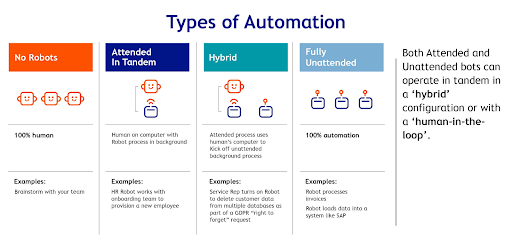
Data automation has become a popular data management technique as it allows organizations to collect, upload, transform, store, process, and analyze data utilizing technologies without manual human intervention.
By automating repetitive and time-consuming tasks such as data ingestion, transformation, validation, cleansing, integration, and analysis, data automation helps organizations make the most of their data and enables faster and easier data-driven decisions.s that cater to different aspects of data management and processing. There are several key types of data automation, including
- Data Integration Automation: This type of automation integrates data from different sources and formats into a centralized database or data warehouse. It involves platforms and tools that enable seamless data integration, ensuring that data from various systems can be accessed and analyzed together.
- Data Transformation Automation: Data often needs to be transformed into a different format or structure to be used effectively. Data transformation automation involves tools that can convert data from one format to another, such as unstructured text to structured data.
- Data Monitoring and Alerting Automation: This type of automation involves setting up automated alerts and notifications based on predefined thresholds or conditions. It helps organizations proactively monitor data and identify potential issues or anomalies.
- Data Reporting Automation: Data reporting automation automates the generation of reports based on processed data. These reports can be customized to meet specific requirements and automatically sent to stakeholders on a scheduled basis.
- Data Cleaning Automation: Data cleaning automation tools use algorithms and rules to identify and correct errors, remove duplicate records, and standardize data formats.
Elements of Data Automation
Data automation is a process that allows engineers to extract data from different sources, transform it into a usable and trusted resource, and load it into systems that end-users can access to solve business problems.
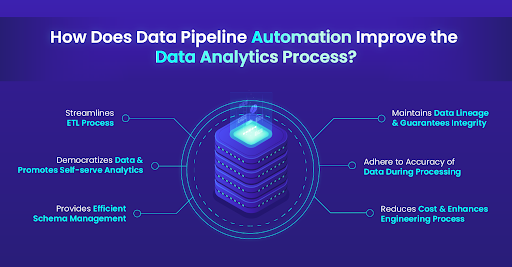
Data automation commonly involves Extract, Transform, and Load (ETL) processes. It can be used for structured and unstructured data from various sources like internal databases, external databases, cloud-based data sources, third-party applications, web services, and APIs.
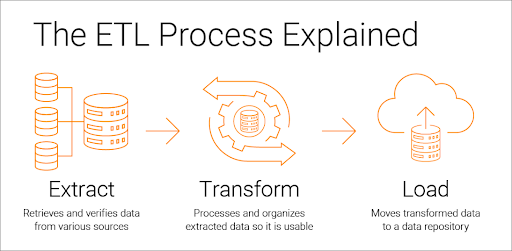
There are different methods to automate data pipelines based on specific requirements.
Scheduled
- Automating data processes is common in many organizations.
- The most popular method of automation is scheduling.
- Nightly data pipeline processes are run automatically every 24 hours.
- This process helps to process all the data collected throughout the day.
Triggered
- Data processes can be automated to start when specific system events occur
- For instance, a data pipeline can automatically start when new data arrives in cloud storage
- This approach ensures that the pipeline runs only when necessary
- It prevents the wastage of valuable resources when no new data is available
Streamed
- A streaming pipeline processes raw data in real-time as it is generated.
- It’s reliable for accessing data from streaming sources like social media or financial markets.
- The stream processing engine handles data as it arrives.
- It enables organizations to make quick, data-driven decisions.
Benefits of Data Automation
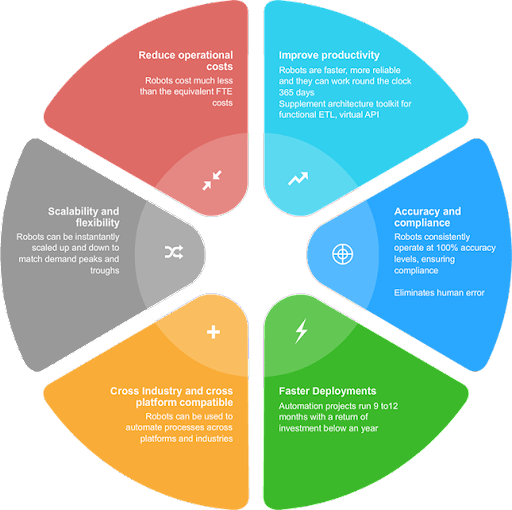
The long-term viability of a data pipeline relies on automation. Embracing automation can enhance data analysis processes and enable organizations to unlock the full potential of their data assets.
Streamlining Operations through Data Automation
Streamlining operations through data automation can be a powerful strategy for businesses looking to improve efficiency, accuracy, and scalability.
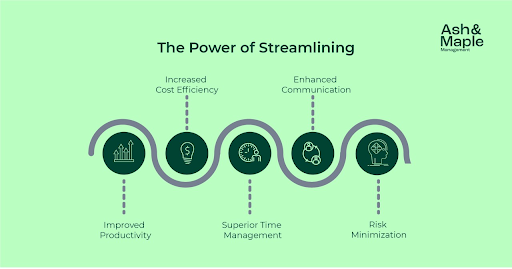
Data automation involves using technology to automatically collect, process, and analyze data, reducing the need for manual intervention and streamlining workflows. Here are some key ways businesses can leverage data automation to streamline operations:
- Data Collection: Automate the collection of data from various sources such as websites, databases, IoT devices, sensors, and applications. This ensures a continuous flow of data without requiring manual effort and reduces the risk of human error.
- Data Analysis: Automate data analysis to identify patterns, trends, and insights that can inform business decisions. This can include exploratory data analysis, predictive modeling, and machine learning.
- Workflow Automation: Automate repetitive tasks and workflows to save time and increase efficiency. This can include tasks such as data entry, report generation, and email communication.
- Reporting and Dashboards: Automate the generation of reports and dashboards to provide real-time insights into key performance indicators (KPIs) and metrics. Use tools like business intelligence software or custom-built dashboards to visualize data and track performance.
- Data Visualization: Use data automation to create interactive visualizations that make it easy to understand complex data. This can include charts, graphs, and maps.
- Inventory Management and Supply Chain Optimization: Use data automation to optimize inventory levels, streamline supply chain processes, and improve demand forecasting. This can help businesses reduce carrying costs, minimize stockouts, and improve overall efficiency.
Overall, data automation can significantly streamline operations by reducing manual effort, minimizing errors, improving decision-making, and enabling businesses to adapt quickly to changing market conditions
By harnessing the power of data automation, organizations can achieve greater efficiency, agility, and competitiveness in today’s fast-paced business environment.
Improving Decision-Making with Data Automation
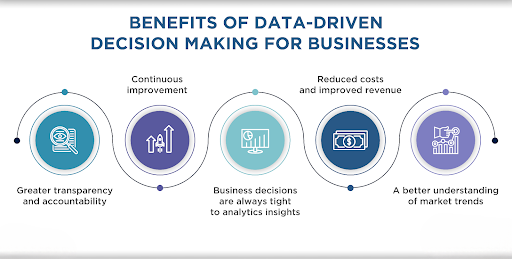
Improving decision-making with data automation involves leveraging technology to gather, process, analyze, and present data in a timely and efficient manner. Here’s how businesses can use data automation to enhance decision-making processes:
- Real-Time Data Access: Automate data collection processes to ensure access to real-time or near-real-time data from various sources. This enables decision-makers to have up-to-date information at their fingertips, allowing for quicker and more informed decisions.
- Alerts and Notifications: Set up automated alerts and notifications to flag important events, anomalies, or deviations from expected results. This allows decision-makers to proactively respond to emerging issues and mitigate risks on time.
- Decision Support Systems: Develop decision support systems that leverage data automation technologies to provide recommendations and insights to decision-makers as they can recommend optimal courses of action based on predefined criteria and business objectives.
- Continuous Improvement: Track KPIs and analyze historical data and performance metrics using data automation to continuously improve decision-making strategies.
- Risk Management and Compliance: Automate risk management and compliance to mitigate potential risks and ensure regulatory compliance. Use data automation to monitor risk indicators, detect anomalies, and take proactive measures to prevent escalation.
Overall, data automation plays a crucial role in improving decision-making processes by providing timely access to accurate data, uncovering actionable insights, facilitating predictive analysis, and streamlining workflows.
By utilizing the power of data automation, businesses can make more informed decisions, drive performance improvements, and gain a competitive edge in today’s data-driven marketplace.
Driving Growth through Data Automation
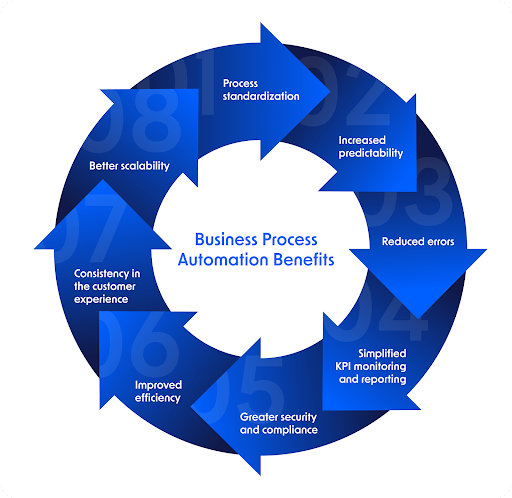
Driving growth through data automation involves leveraging technology to streamline operations, optimize processes, and capitalize on opportunities. Here’s how data automation can contribute to organizational growth:
- Operational Efficiency: Data automation streamlines tasks, reduces errors, and improves productivity. It optimizes workflows, saves time, and enables organizations to operate more effectively without increasing costs.
- Scalability and Expansion: Automating core business functions such as inventory management, supply chain optimization, and financial forecasting lays the foundation for scalable and sustainable growth, enabling organizations to capitalize on growth opportunities without being constrained by operational limitations.
- Agility and Innovation: Data automation enables organizations to quickly adapt to market changes and identify opportunities in real time. This fosters innovation, helps stay ahead of competition, and drives growth through new products and business models.
- Optimized Marketing and Sales Strategies: Data automation optimizes marketing and sales strategies through data analysis, segmentation, predictive analytics, and campaign management. It enhances sales and marketing efforts, driving higher conversion rates and revenue growth.
- Personalized Customer Experiences: Data automation improves customer experiences by collecting and analyzing data from multiple touchpoints. This leads to personalized marketing campaigns, product recommendations, and customer service experiences, ultimately increasing customer satisfaction and retention.
By leveraging technology to automate processes, organizations can unlock new opportunities, drive competitive advantage, and achieve sustainable growth in today’s data-driven economy.
Challenges and Considerations
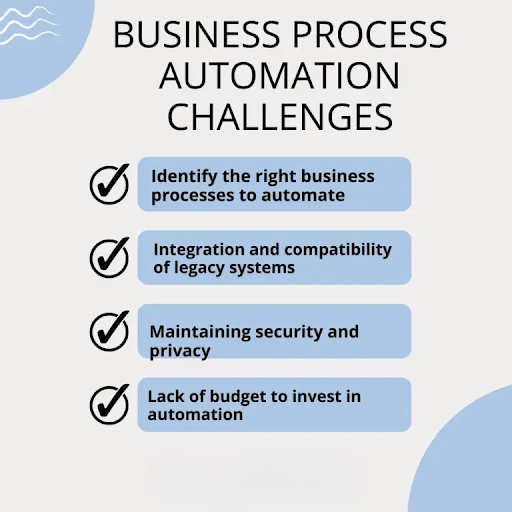
Data automation can be highly fruitful for organizations. But, it still has some limitations like any other method.
Understanding curve
- Data automation may require adjustment for employees and stakeholders to become familiar with its functionality and usage.
- Employees may find data automation cumbersome, resulting in hesitation to adopt it.
- A steep learning curve may also pose a challenge to the adoption of data automation.
- Failure to adopt data automation can lead to challenges in achieving desired outcomes.
Fear of Worker Displacement
- Resistance to data automation tools can be due to concerns about job displacement.
- Proper training can help data operators effectively utilize data automation tools.
- With correct configuration, automation solutions can maximize usefulness and minimize negative impacts on the workforce.
Human-level monitoring is still needed.
- Data automation can streamline data integration and reduce manual effort.
- Critical workflow tasks may still require human intervention.
- Approvals in processes such as leave management or order placement may necessitate human decision-making.
- Lapses in following the process can result in delays or errors.
Cost and security considerations
- Implementing data automation systems can involve initial investment costs or subscription charges.
- A cost-benefit analysis should be performed to determine if data automation provides overall value and feasibility for a particular case.
- Concerns about data security and confidentiality may arise when dealing with sensitive data.
- Appropriate measures must be taken to ensure data protection when utilizing data automation services.
After careful evaluation, it can be concluded that data automation has many advantages, such as enhanced efficiency and reduced costs.
However, some potential challenges need to be addressed, including the learning curve, worker displacement concerns, the need for human intervention in certain tasks, as well as cost and security considerations.
Therefore, it is crucial to plan and implement data automation thoughtfully to overcome these potential hurdles effectively.
Conclusion
In conclusion, data automation presents a transformative opportunity for organizations to streamline operations, enhance decision-making, and drive sustainable growth in today’s competitive business landscape.
By automating data collection, integration, analysis, and reporting processes, organizations can optimize workflows, improve efficiency, and unlock valuable insights from their data assets. Real-time data access allows organizations to make informed decisions, respond quickly to market dynamics, and capitalize on emerging opportunities.
Automated data analysis generates actionable insights faster, while predictive analytics and forecasting anticipate future trends. Visualization and reporting automation facilitate communication of insights, alerts enable proactive identification of issues and decision support systems provide recommendations.
However, data automation presents challenges such as data quality, security, privacy, and regulatory compliance. Prioritizing data governance can ensure the integrity, confidentiality, and compliance of data assets, enabling organizations to drive competitive advantage and achieve strategic objectives in today’s data-driven economy.

Meerashri Thakar is a Digital Marketer and Content Marketing specialist with experience in generating SEO-optimized content and has made content on Product, Shopify, Drupal, Digital Marketing, etc.



